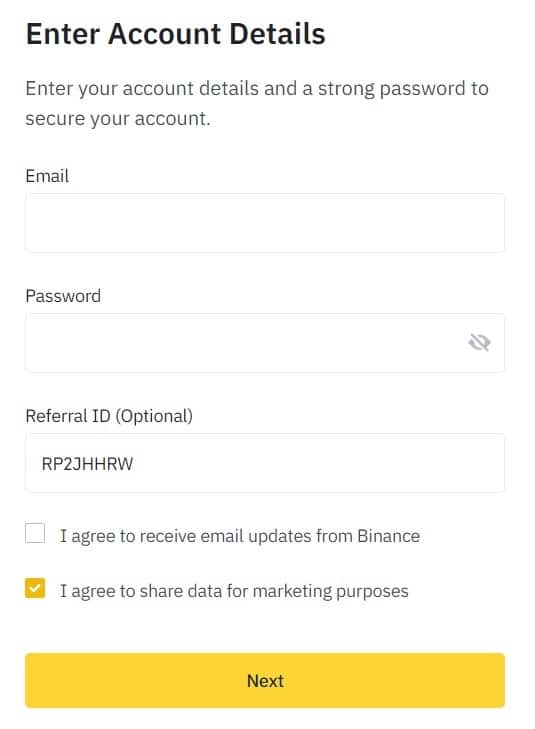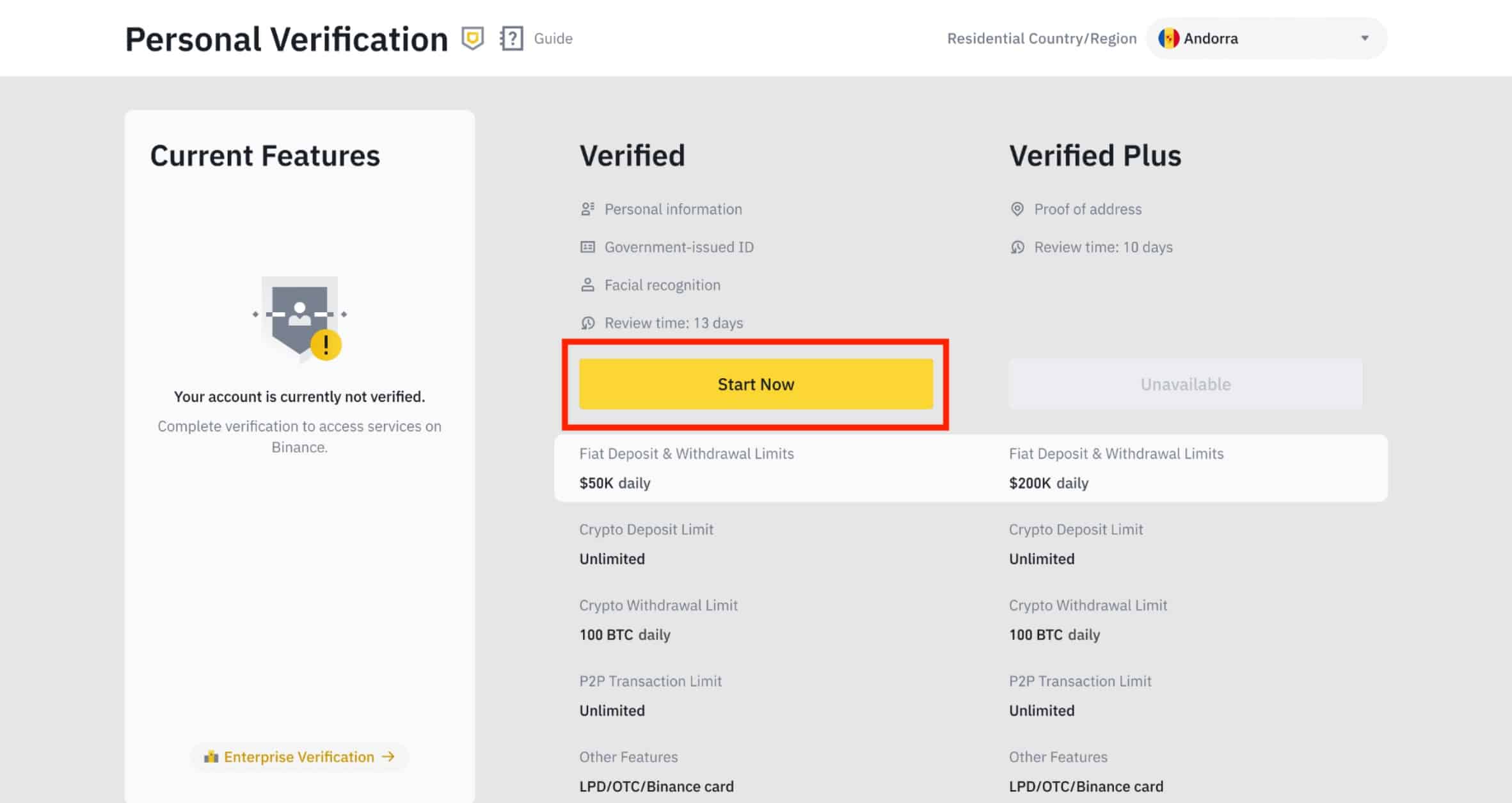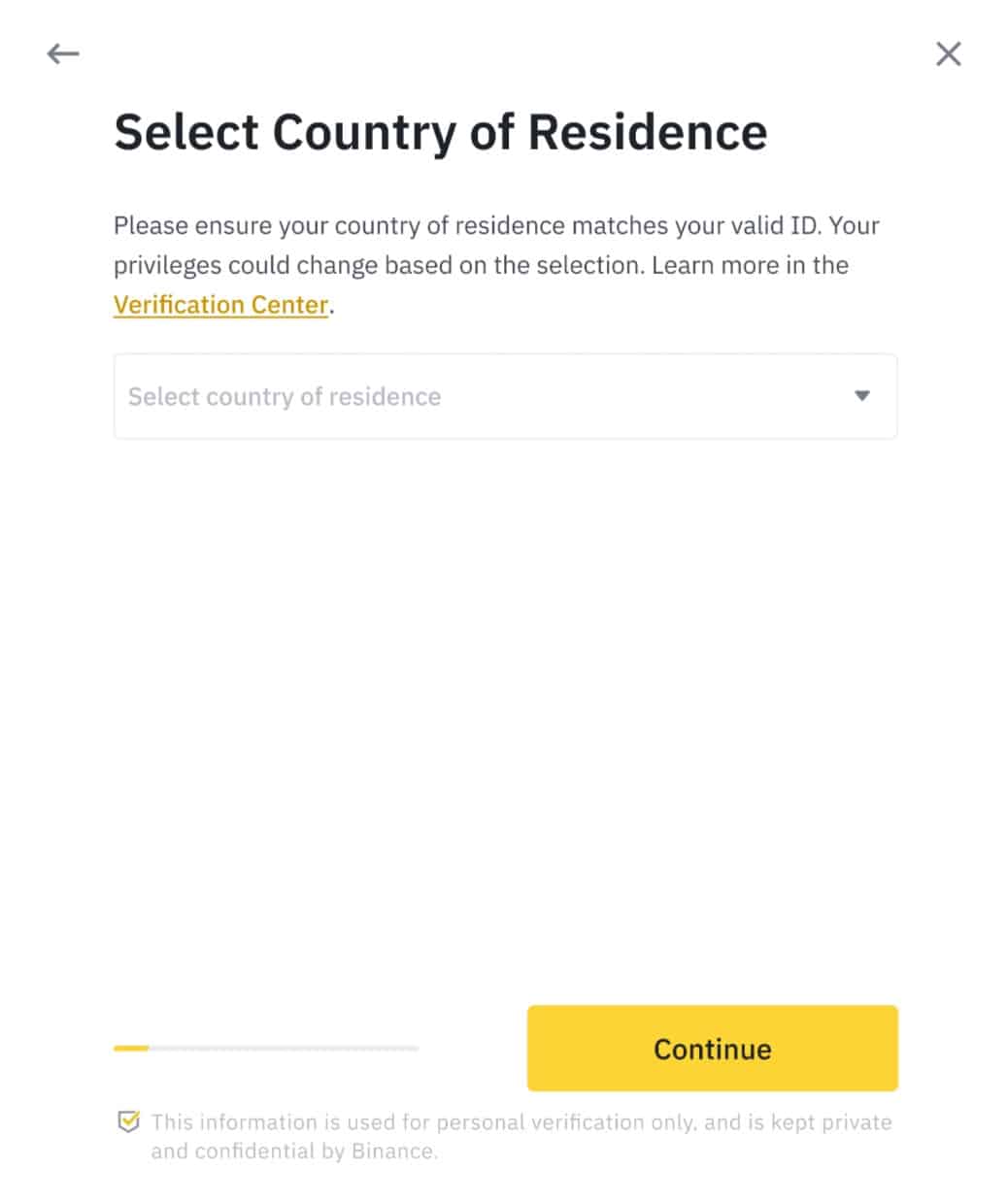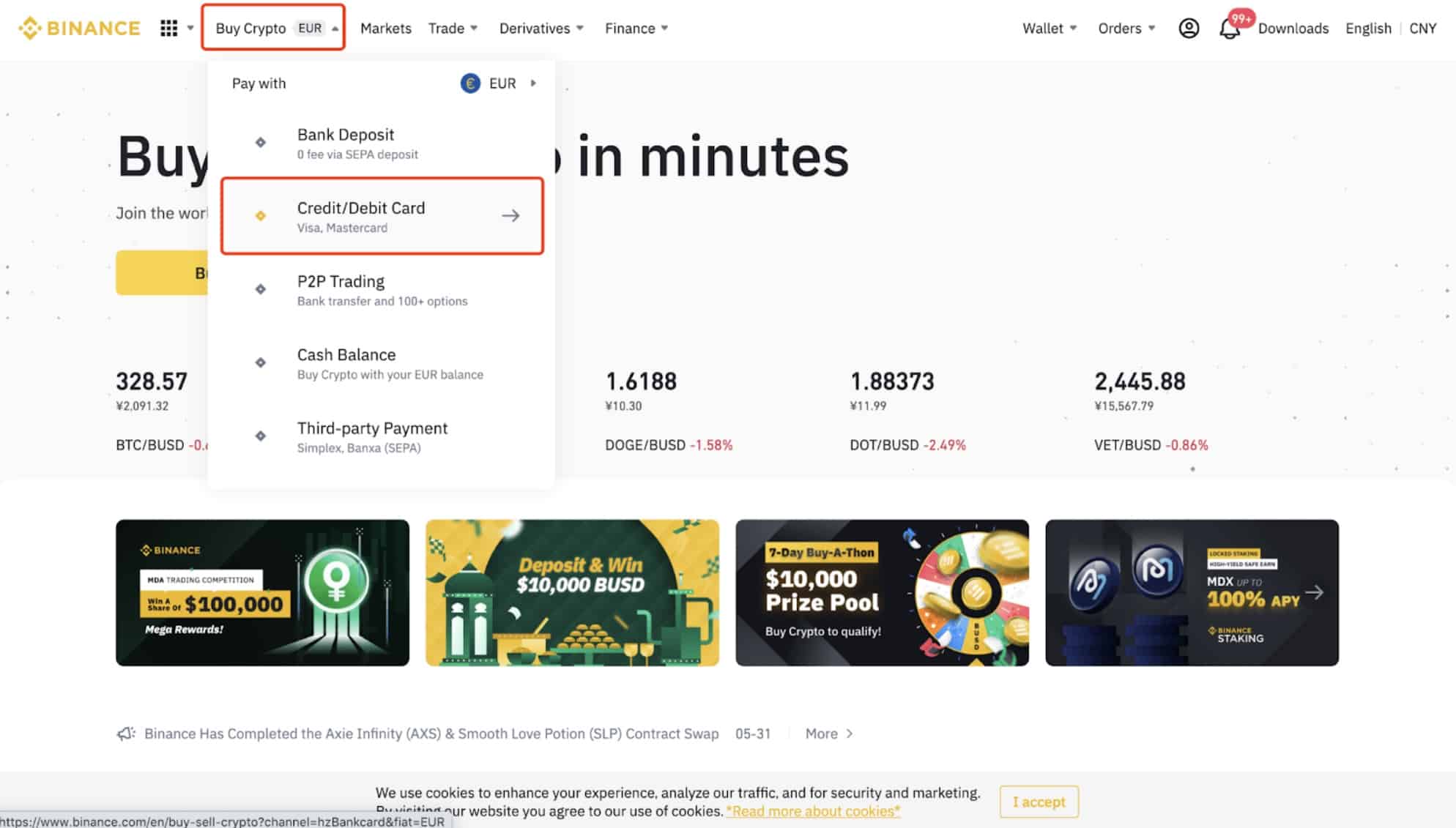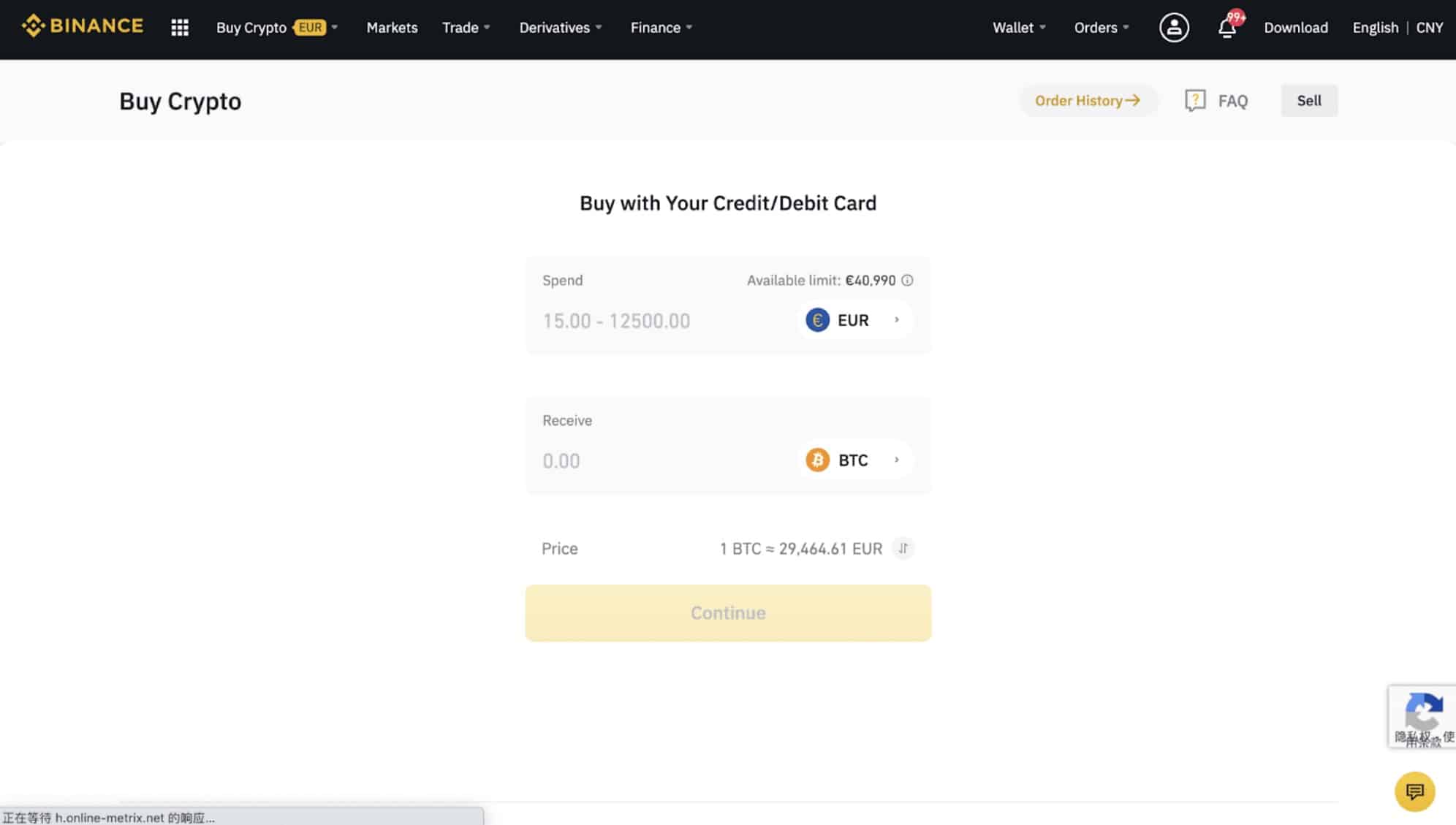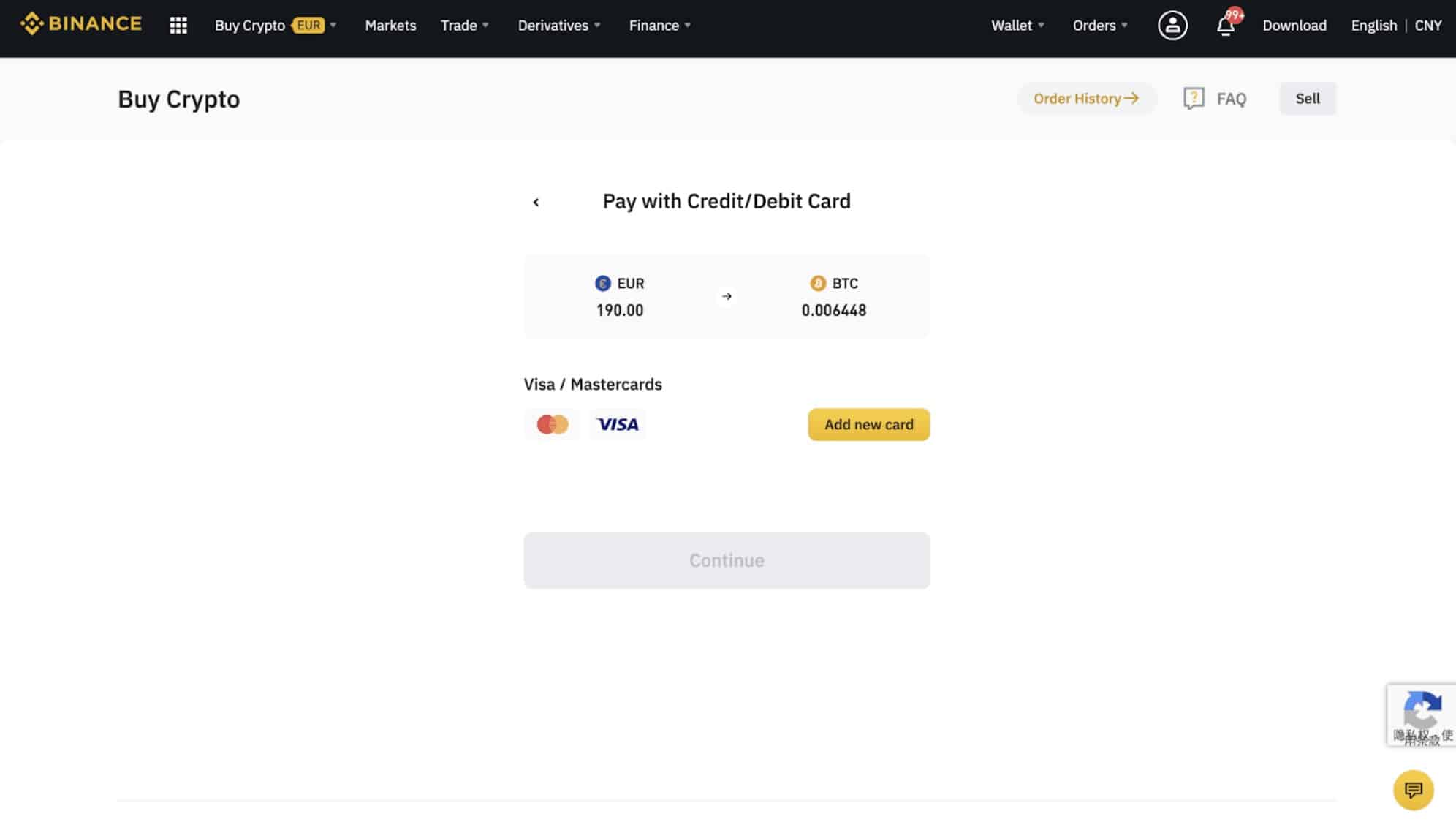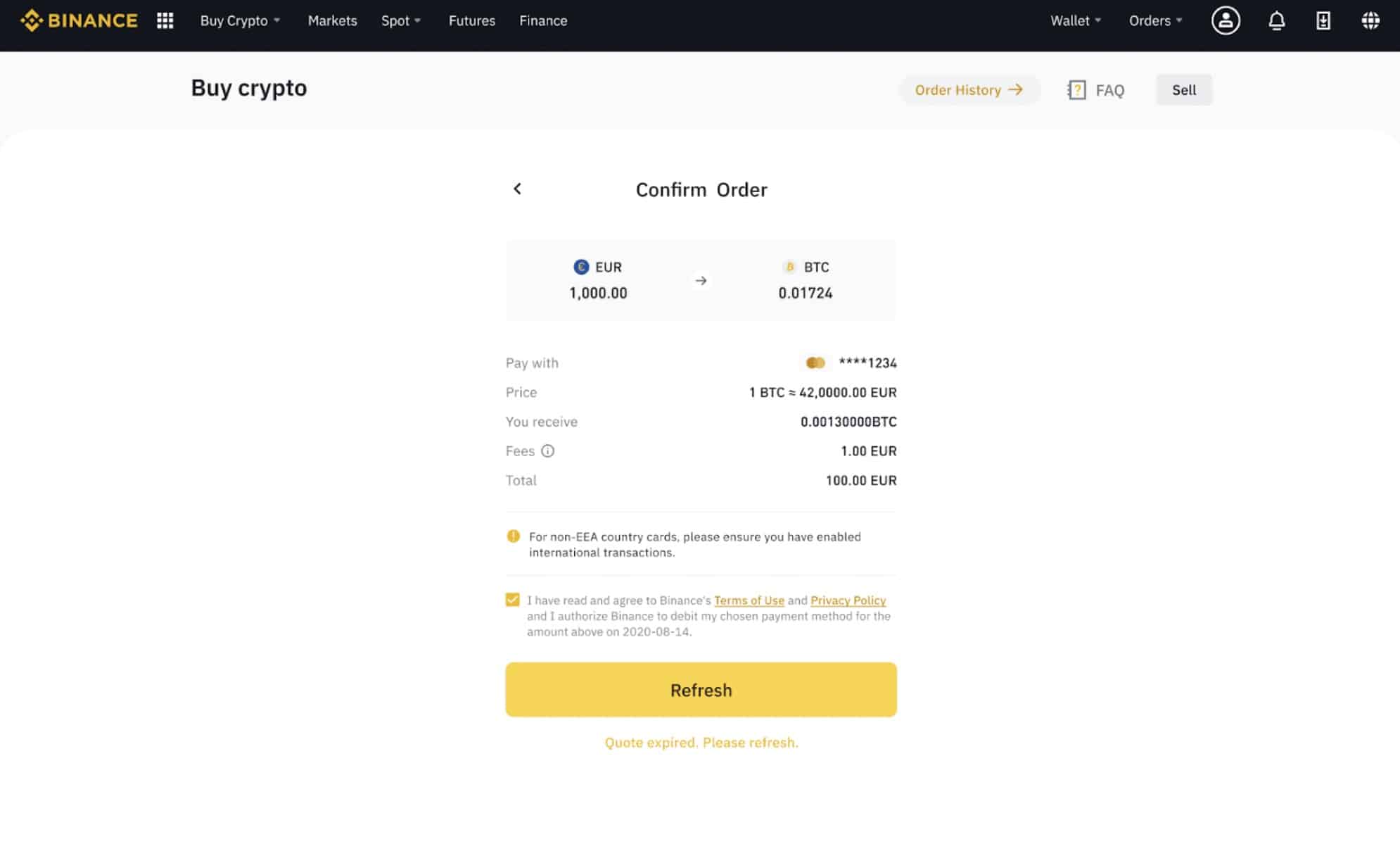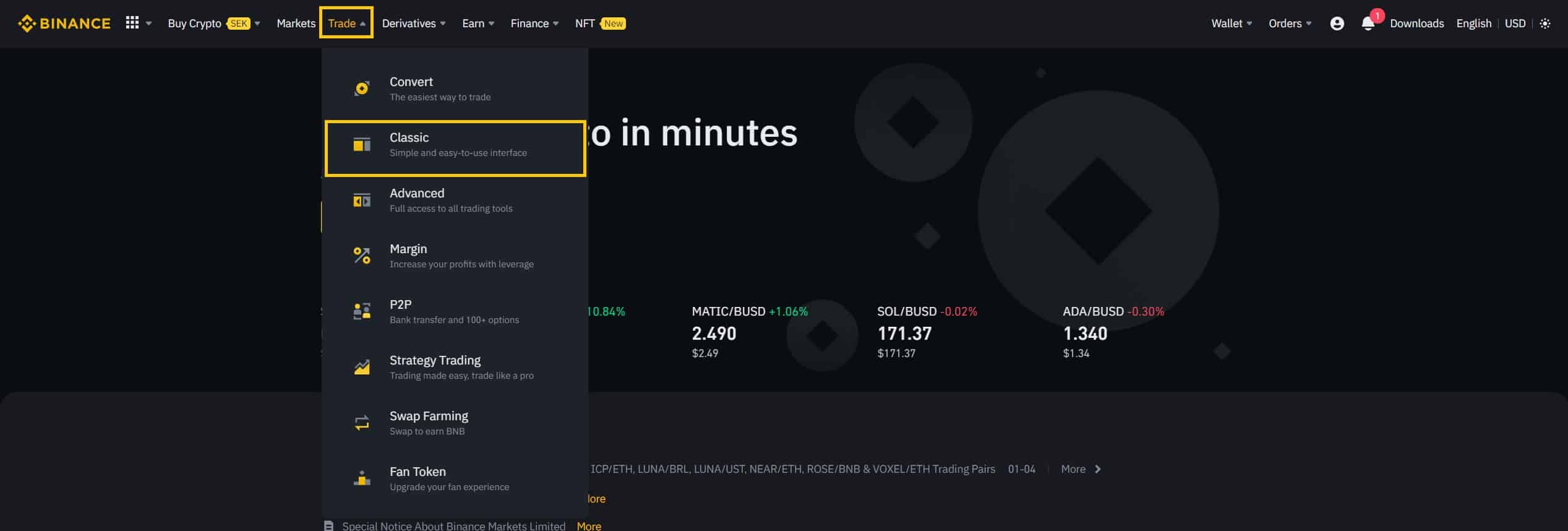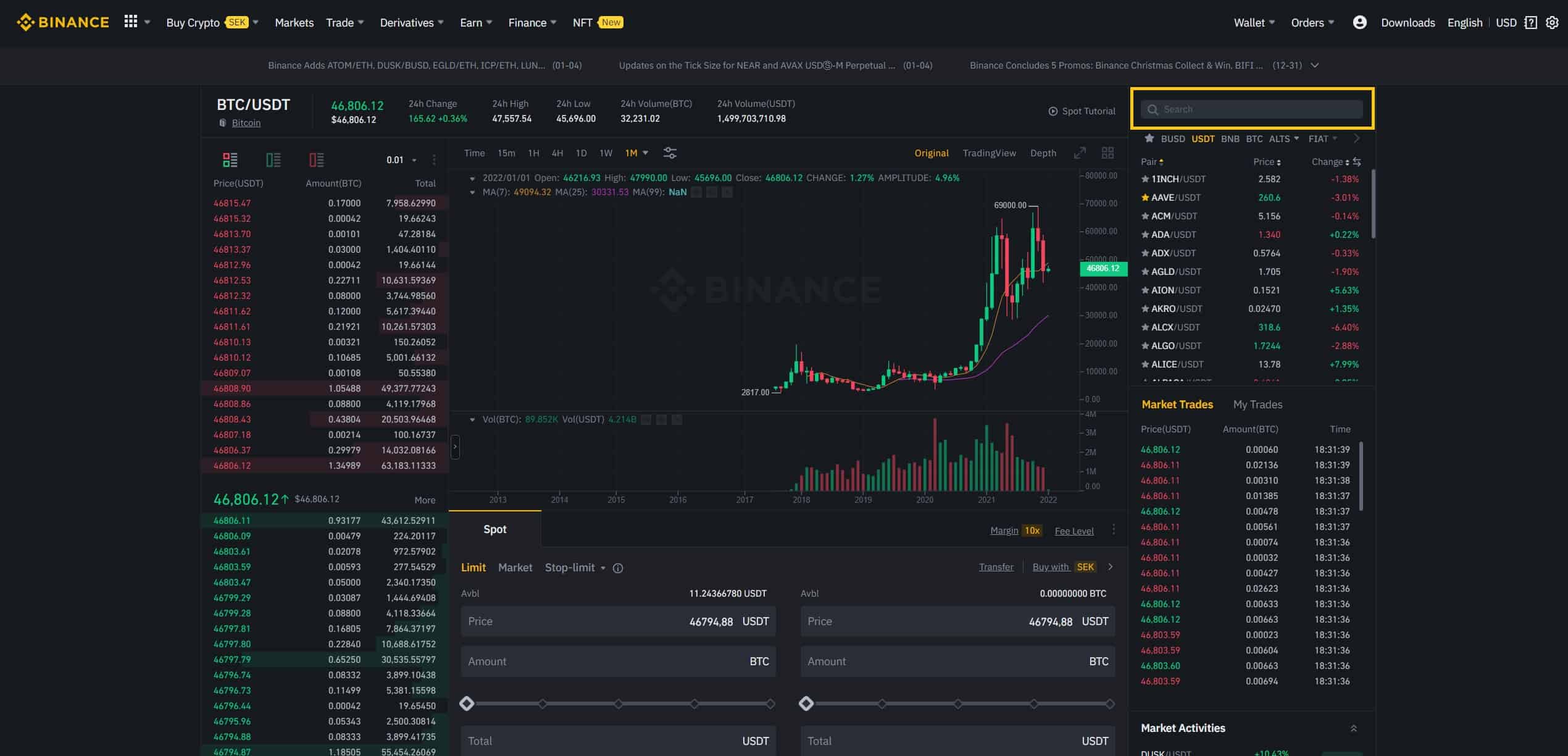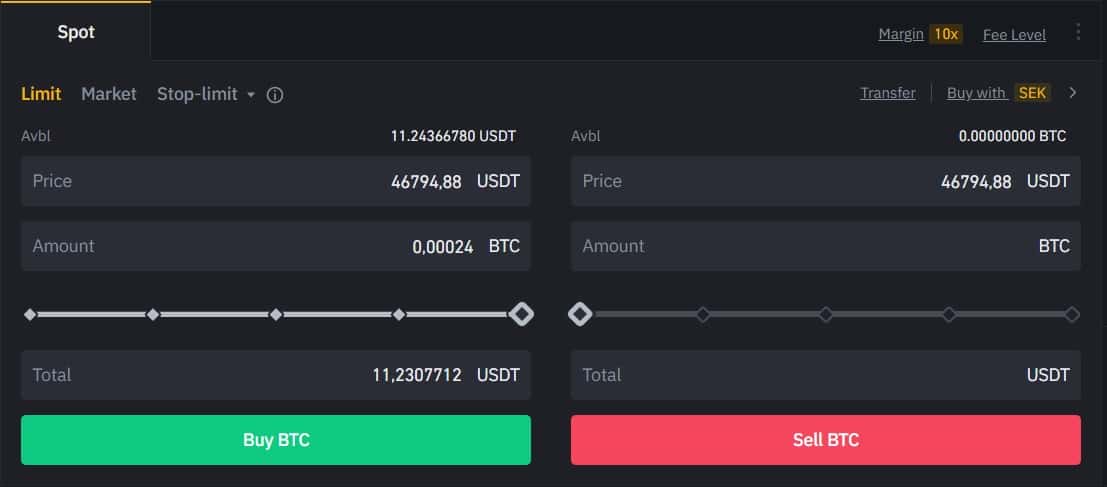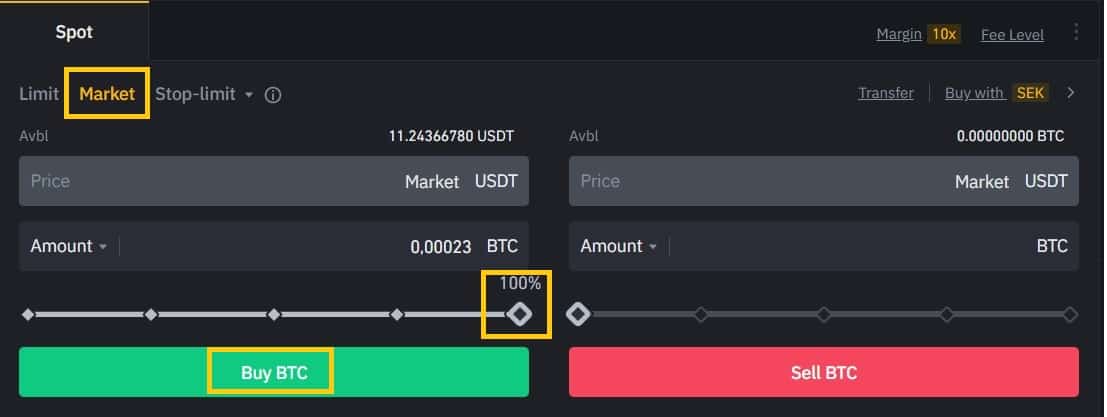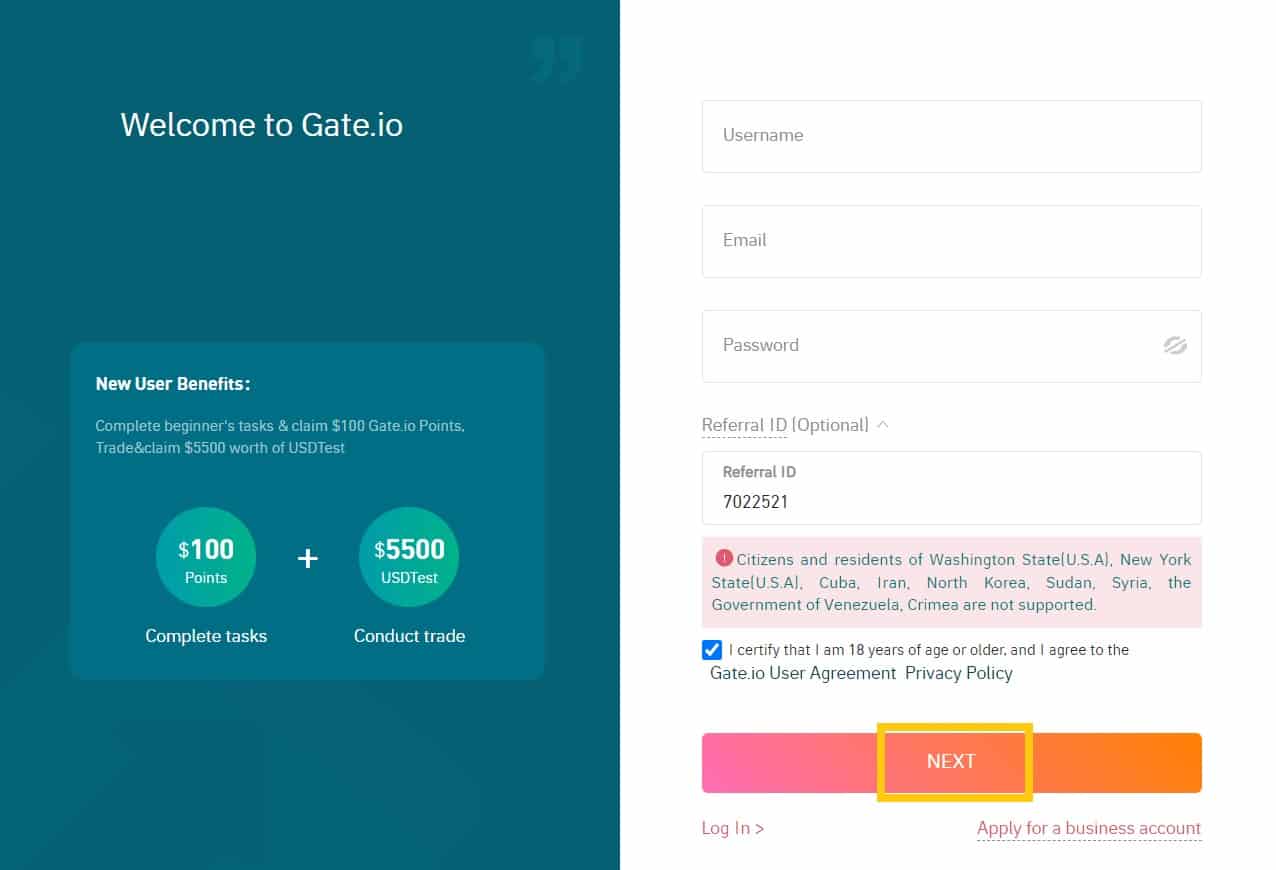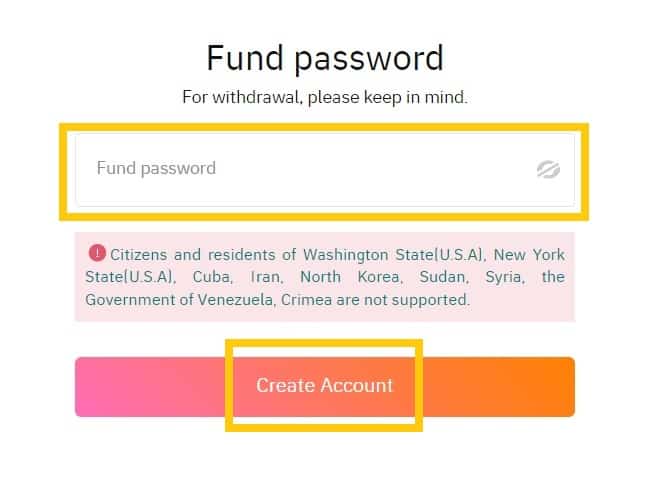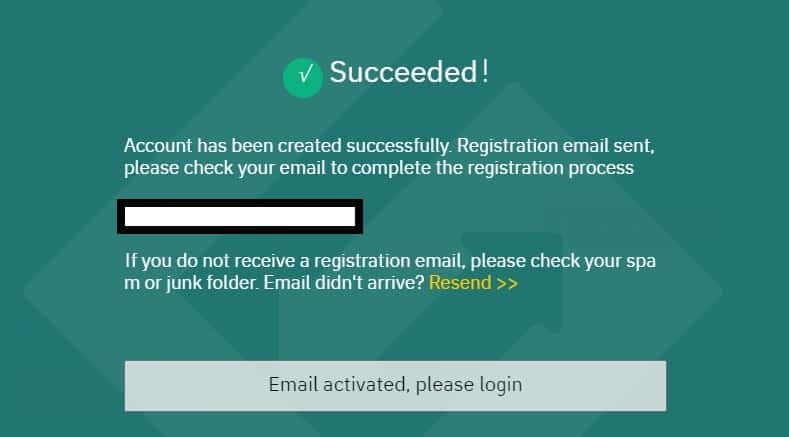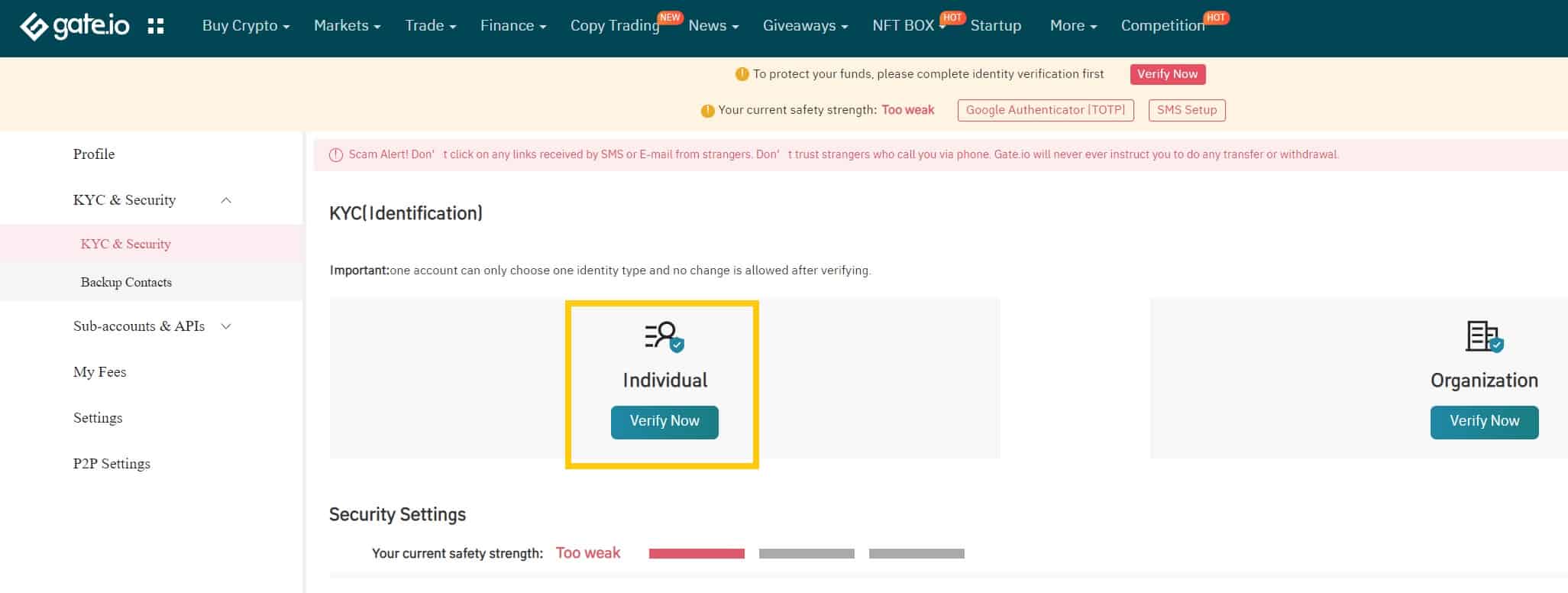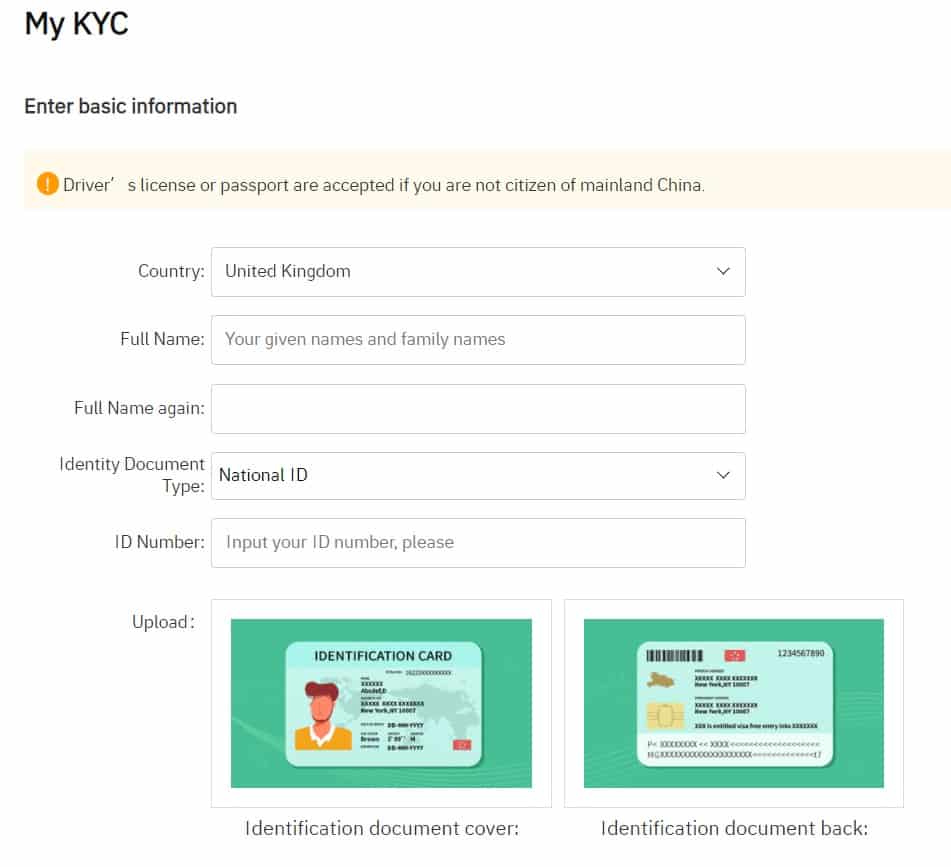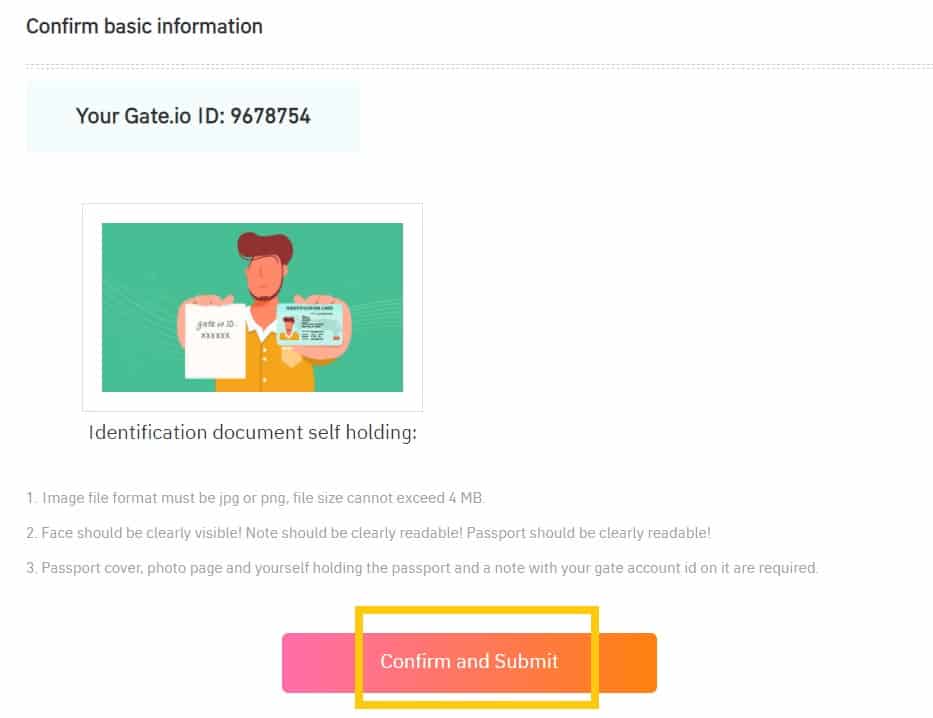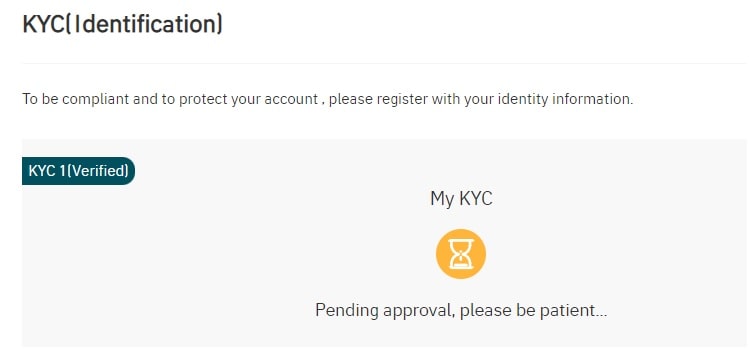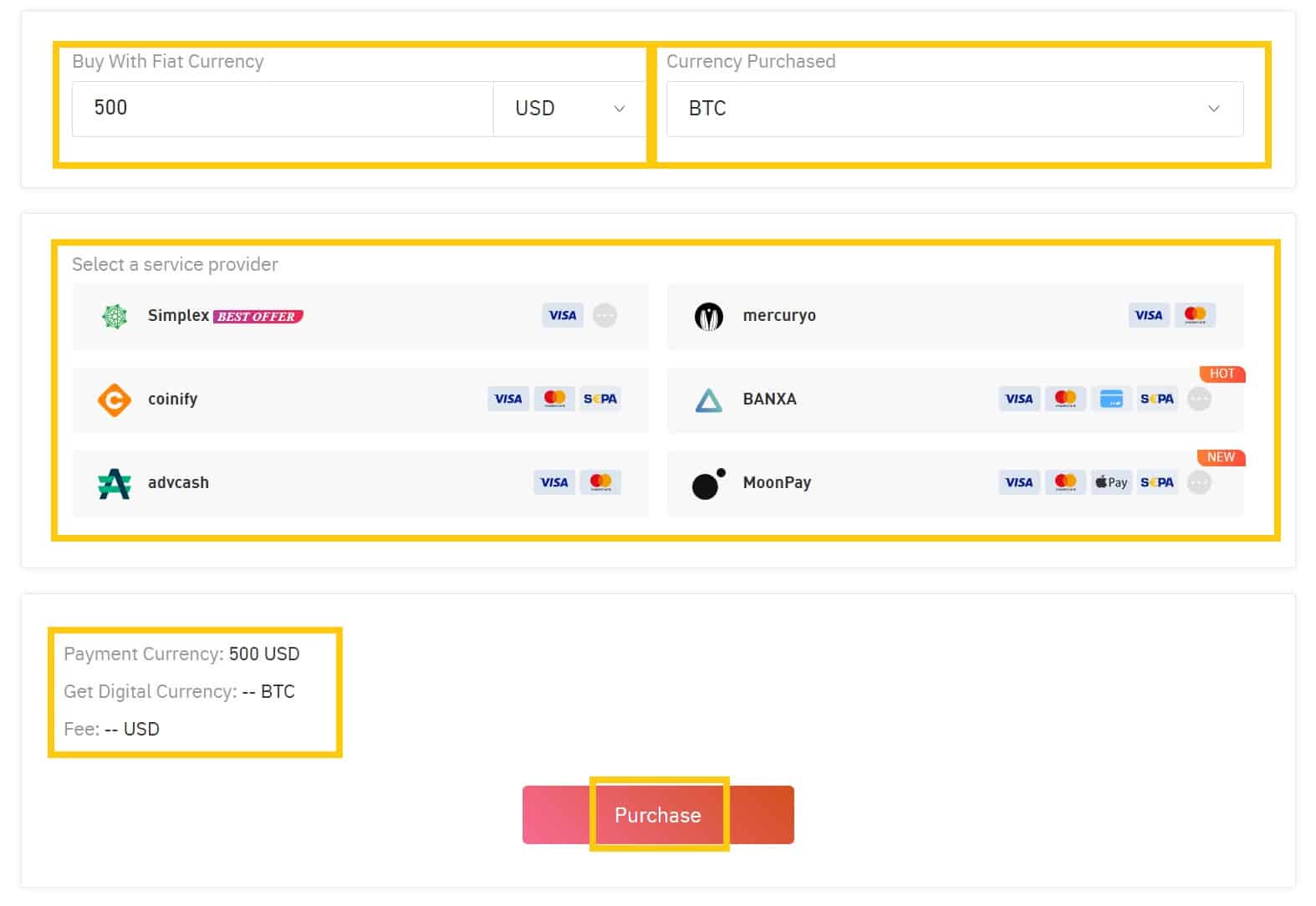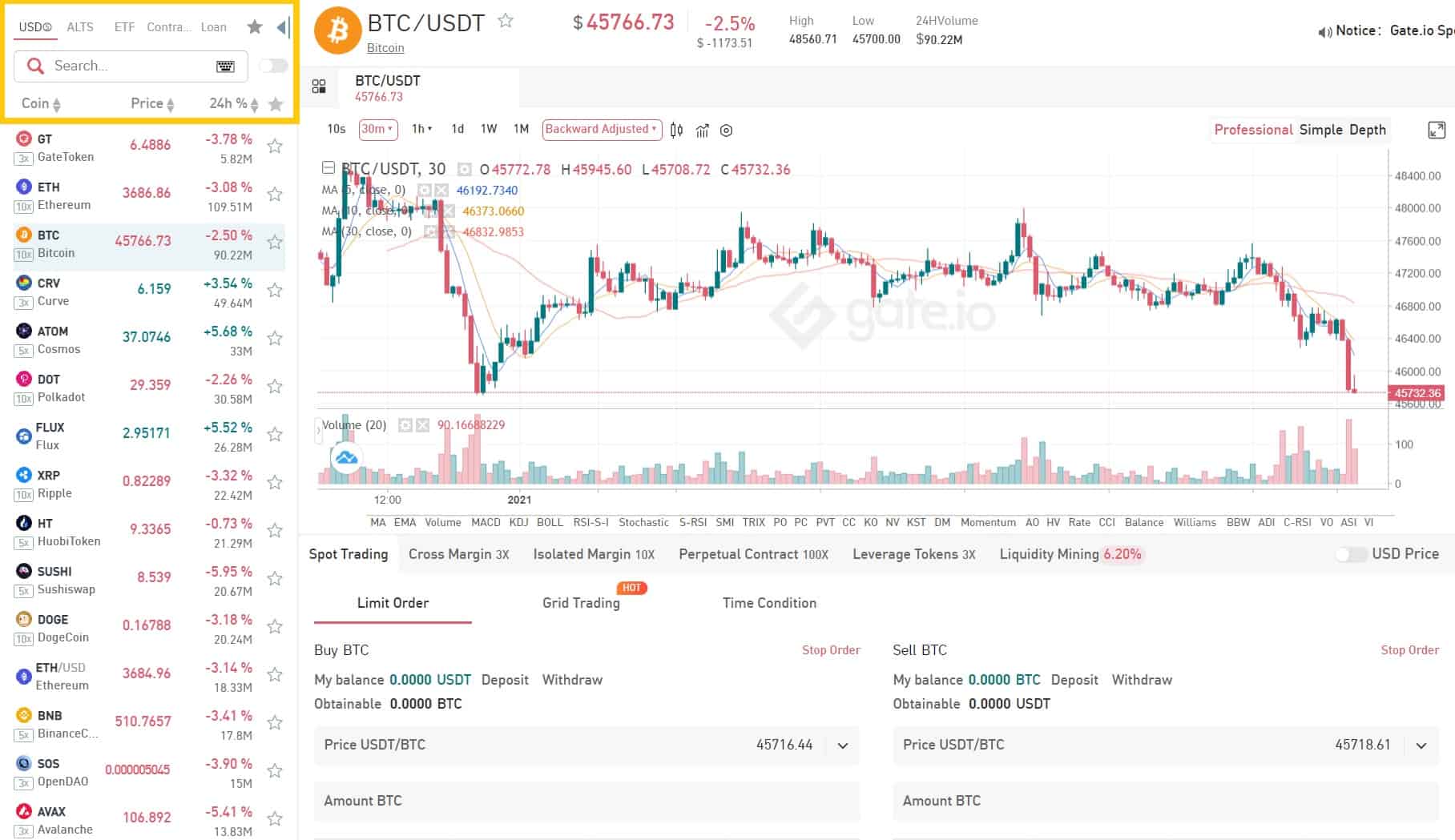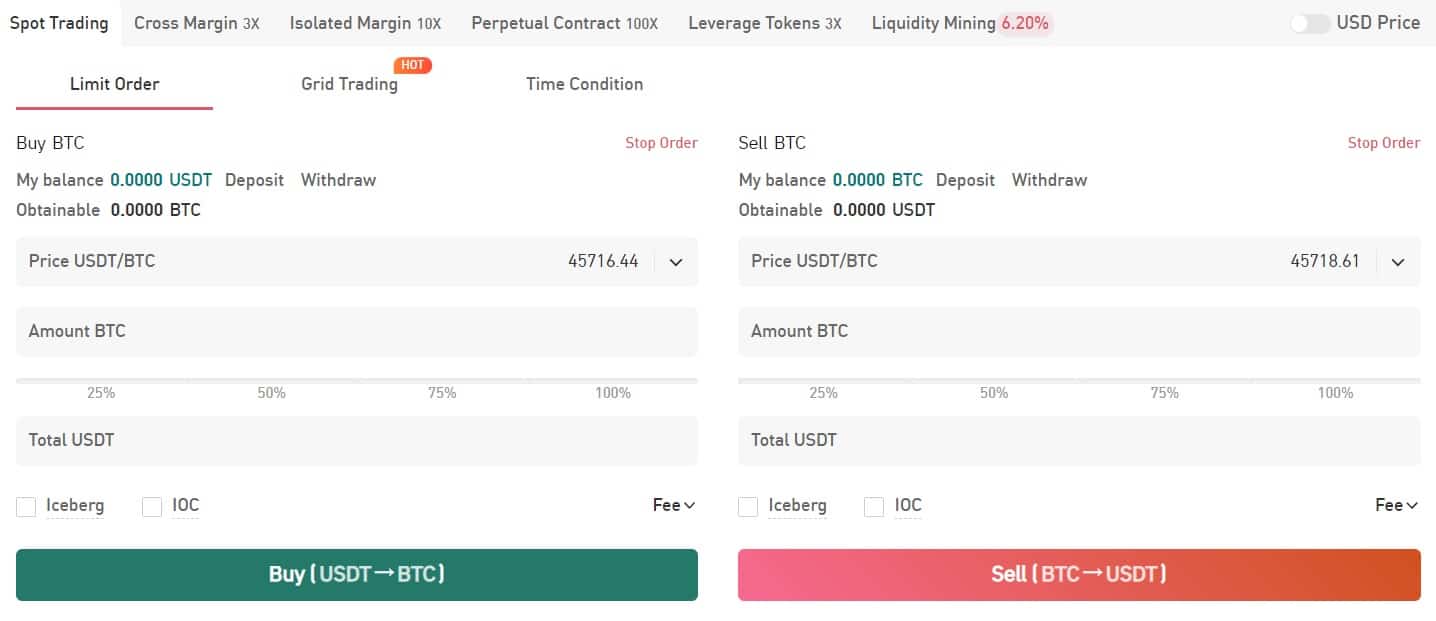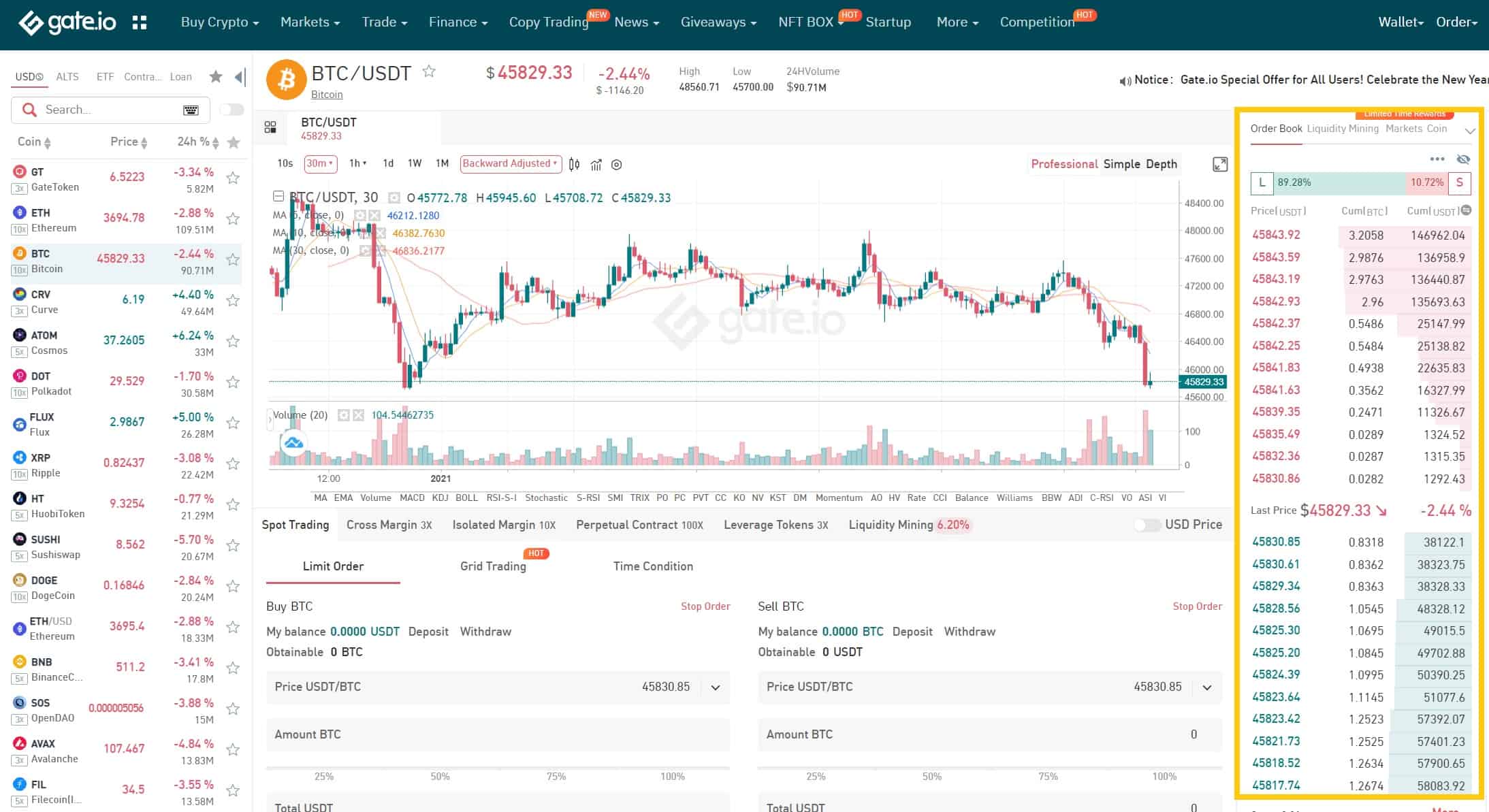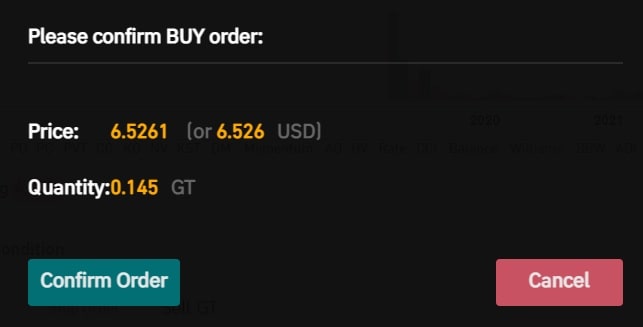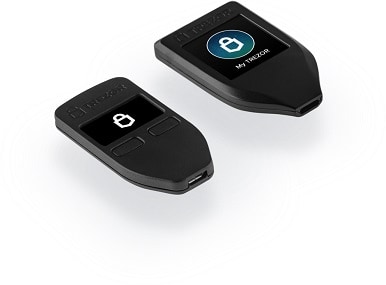How To Buy IOTA (MIOTA)?
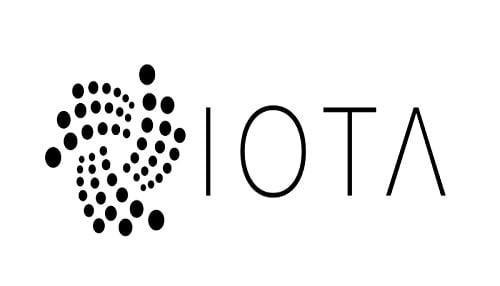
A common question you often see on social media from crypto beginners is “Where can I buy IOTA?” Well, you’ll be happy to hear it is actually quite a simple and straightforward process.
Step 1: Create an account on an exchange that supports IOTA (MIOTA)
First, you will need to open an account on a cryptocurrency exchange that supports IOTA (MIOTA).
We recommend the following based on functionality, reputation, security, support and fees:
1
Binance
Fees (Maker/Taker) 0.075%*-0.1%*
Cryptocurrencies
Available for Trade 500+
Sign-up bonus
10% reduced trading fees*
Available in
Europe, Asia, Oceania, Africa
2
Gate.io
Fees (Maker/Taker) 0.2%*-0.2%*
Cryptocurrencies
Available for Trade 1000+
Sign-up bonus
Up to $100 in USDT vouchers*
Available in
North America, South America, Europe, Asia, Oceania, Africa
In order to sign up, you will need to enter some basic information, such as your email address, password, full name and, in some cases, you might also be asked for a phone number or address.
Note: On specific exchanges, you might need to complete a Know Your Customer (KYC) procedure in order to be able to purchase cryptocurrency. This is most commonly the case with licensed and regulated exchanges.
Step 2: Deposit funds into your account
Many cryptocurrency exchanges will allow you to purchase IOTA (MIOTA) with fiat currencies, such as EUR, USD, AUD and others. Furthermore, they will also provide you with multiple deposit methods through which you can fund your fiat account, such as credit and debit cards, ewallets or direct bank transfers.
Note: Some payment methods will have higher fees than others, such as credit card payments. Before funding your fiat account on your chosen exchange, make sure to do your due diligence to find out the fees involved with each payment method to avoid unnecessary costs.
Step 3: Buy IOTA (MIOTA)
This process is similar across almost every cryptocurrency exchange. All you have to do is find a navigation bar or a search bar, and search for IOTA (MIOTA) or IOTA (MIOTA) trading pairs. Look for the section that will allow you to buy IOTA (MIOTA), and enter the amount of the cryptocurrency that you want to spend for IOTA (MIOTA) or the amount of fiat currency that you want to spend towards buying IOTA (MIOTA). The exchange will then calculate the equivalent amount of IOTA (MIOTA) based on the current market rate.
Note: Make sure to always double-check your transaction details, such as the amount of IOTA (MIOTA) you will be buying as well as the total cost of the purchase before you end up confirming the transaction. Furthermore, many cryptocurrency exchanges will offer you their own proprietary software wallet where you will be storing your cryptocurrencies; however, you can create your own individual software wallet, or purchase a hardware wallet for the highest level of protection.
How to create a Binance account
Show Detailed Instructions
Hide Detailed Instructions
Step 1: Go to the Binance website.
Step 2: On the registration page, enter your email address, and create a password for your account.
Then, read and agree to the Terms of Service and click “Create Account”.
Note: Your password must be a combination of numbers and letters.
It should contain at least 8 characters, one UPPER CASE letter, and one number.
Step 3: Complete the Security Verification.
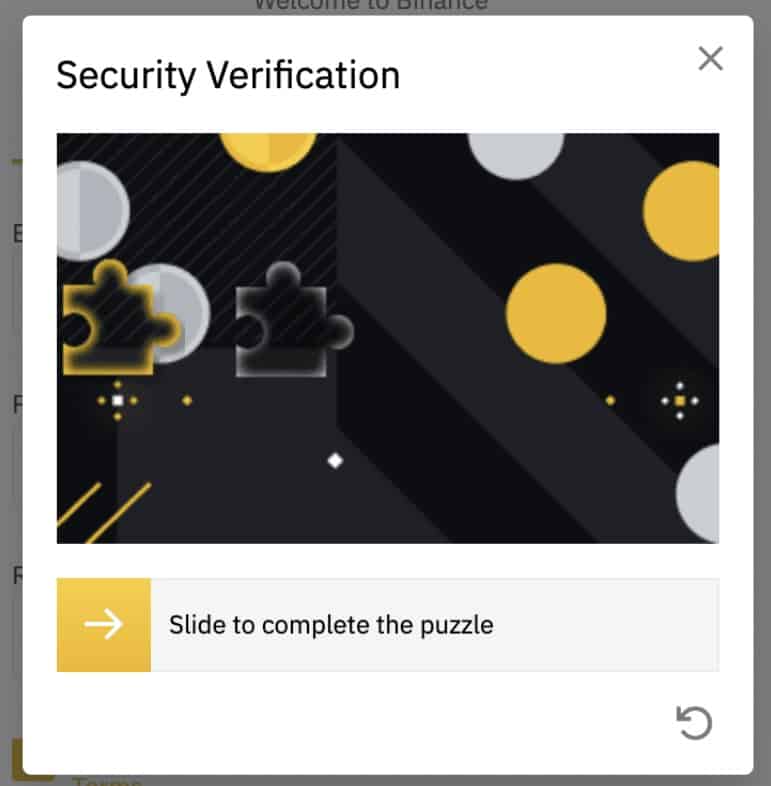
Step 4: The system will send a verification code to your email. The verification code is valid for 30 minutes. If you can’t find the email in your inbox, check your other mail folders as well, or click “Resend Email” to resend.
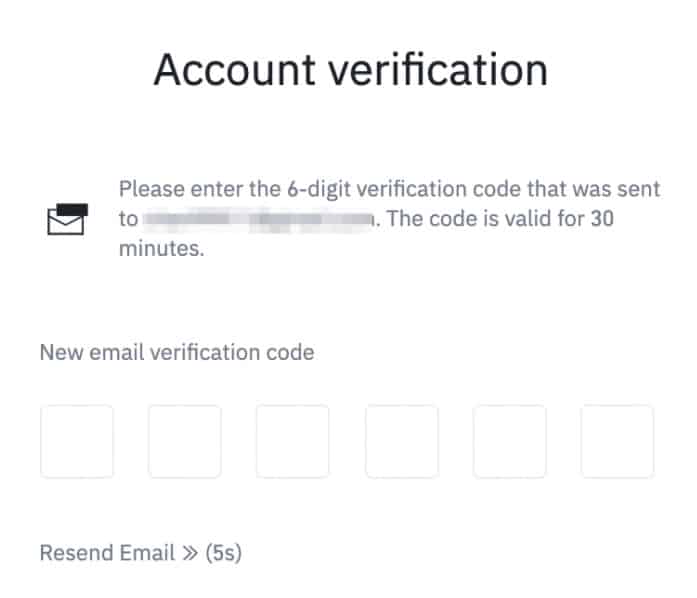
How to complete KYC (ID Verification) on Binance
Step 1: Log in to your Binance account and click “User Center” and then “Identification”.
Step 2: click “Start Now” to verify your account.
Step 3: Select your country of residence.
Ensure that your country of residence is consistent with your ID documents.
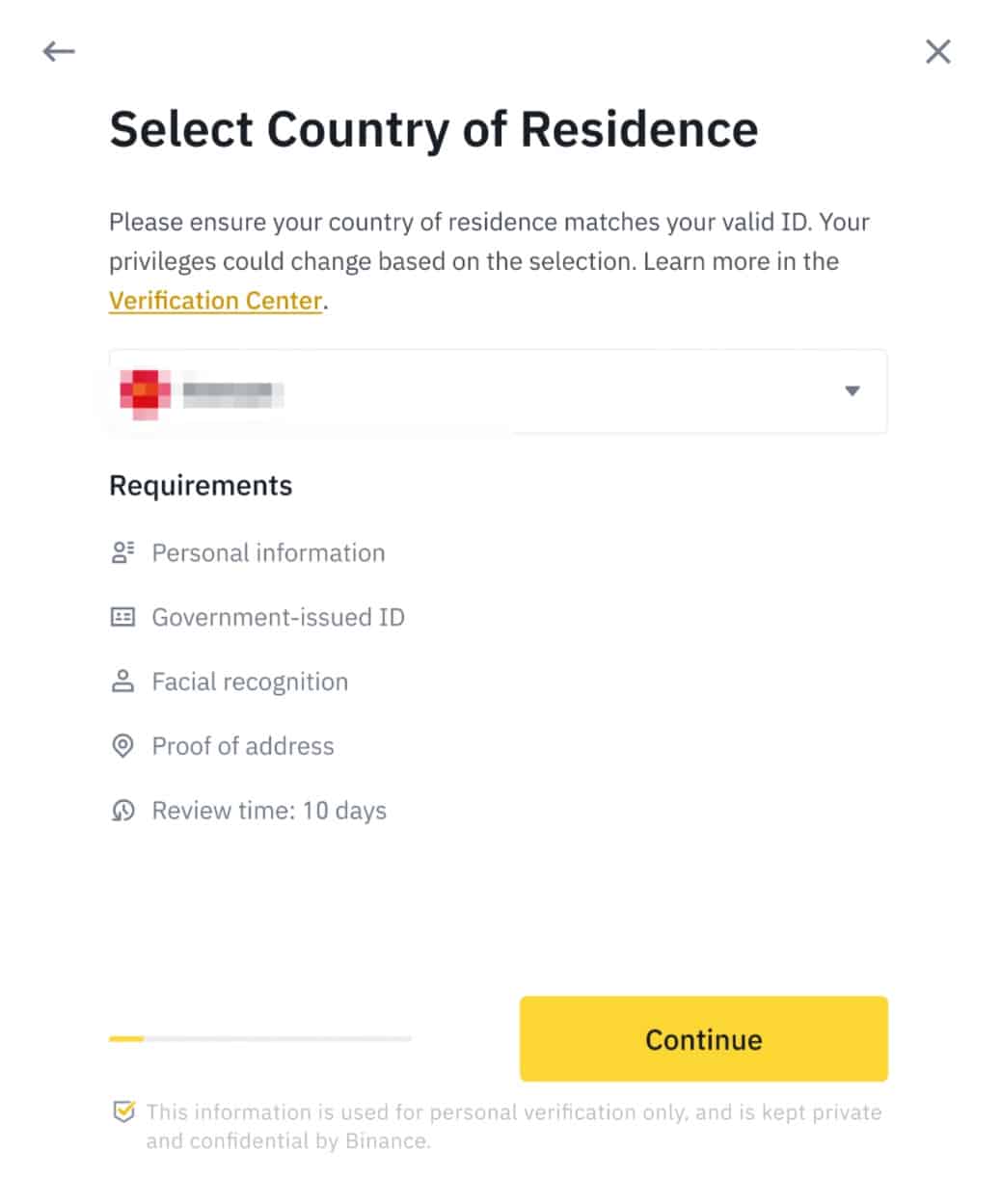
Step 5: Enter your personal information and click “Continue.”
You won’t be able to change it once confirmed.
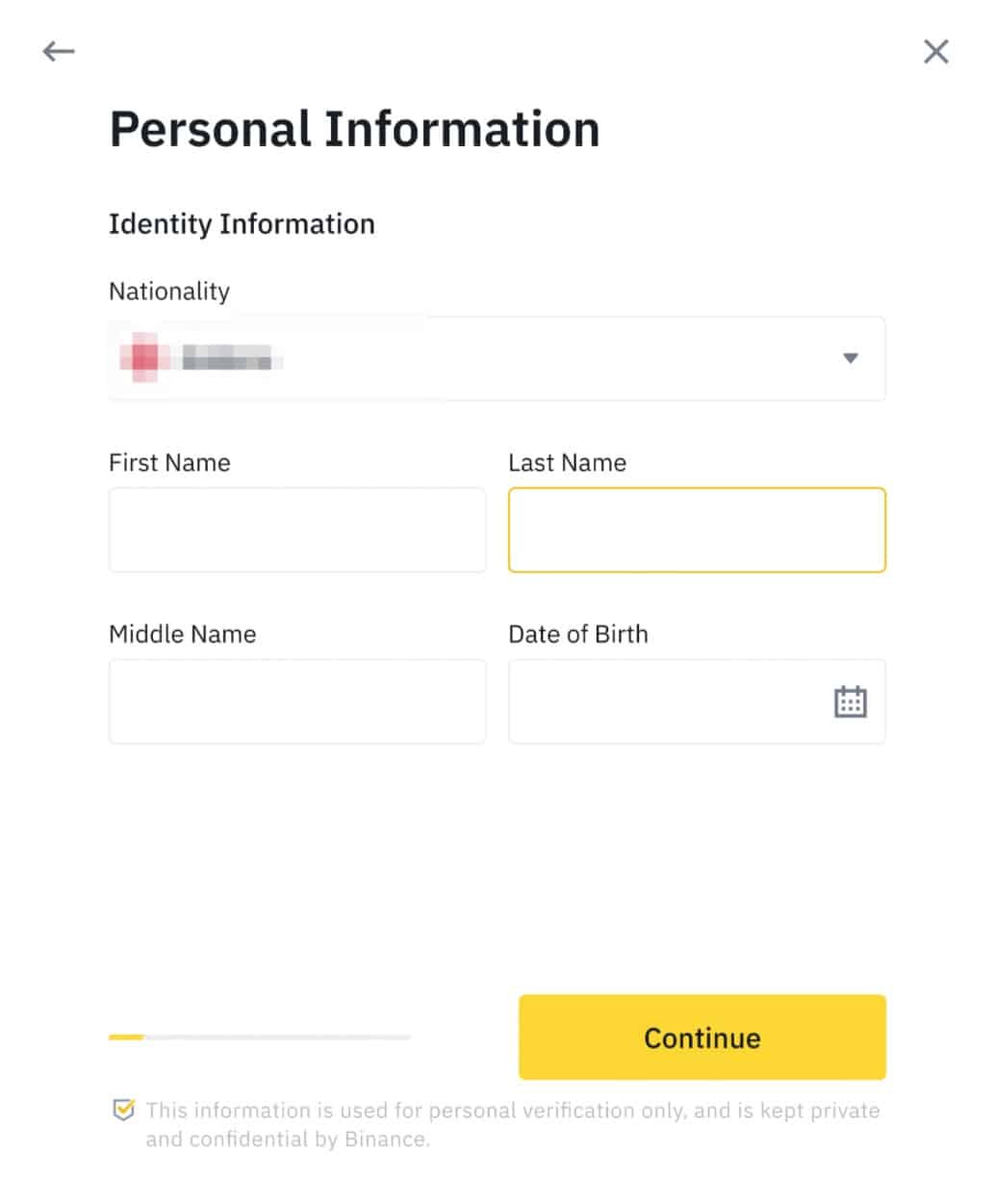
Refer to the respective options offered for your country.
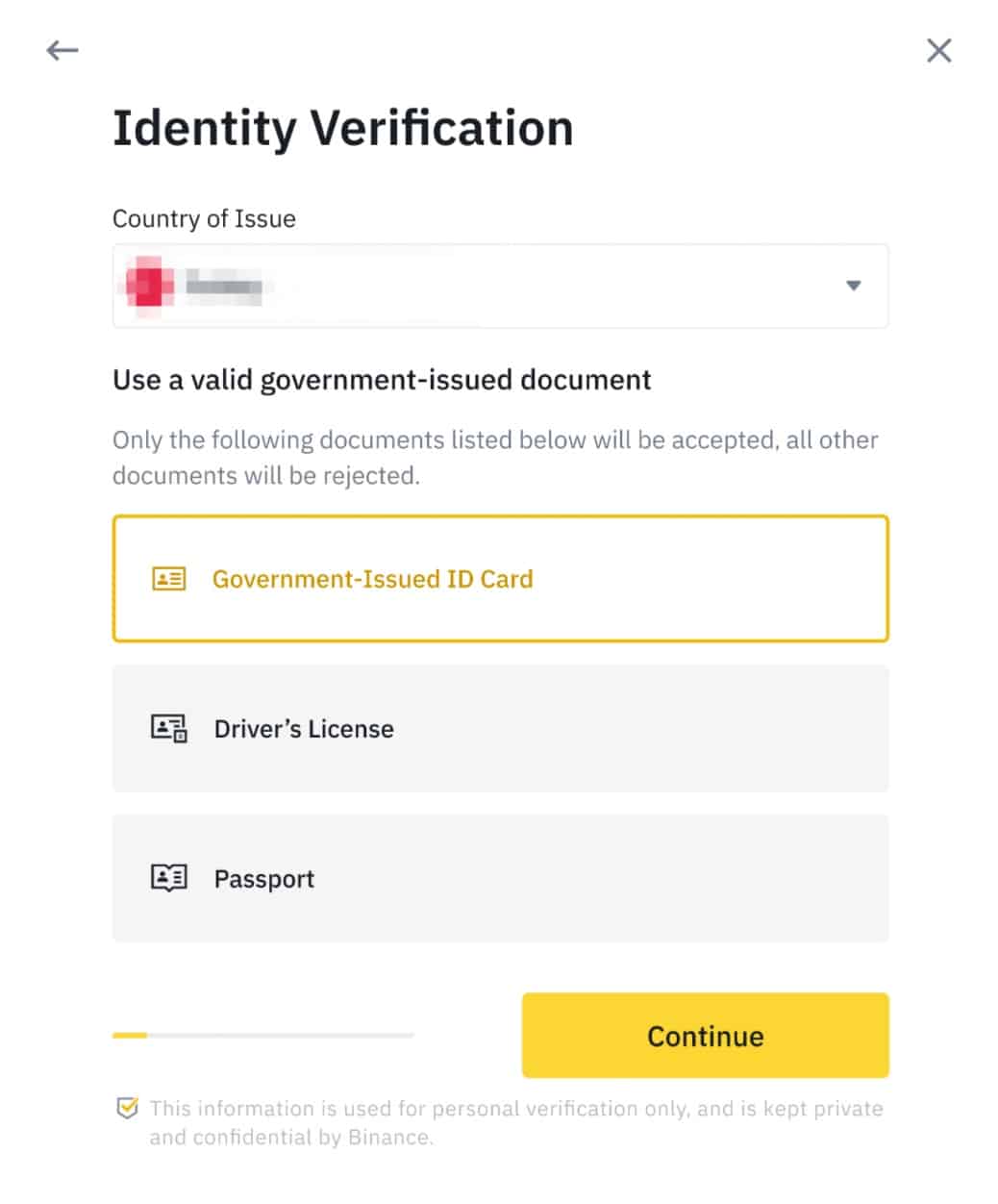
Step 7: Follow the instructions to upload photos of your document. Your photos should clearly show the full ID document.
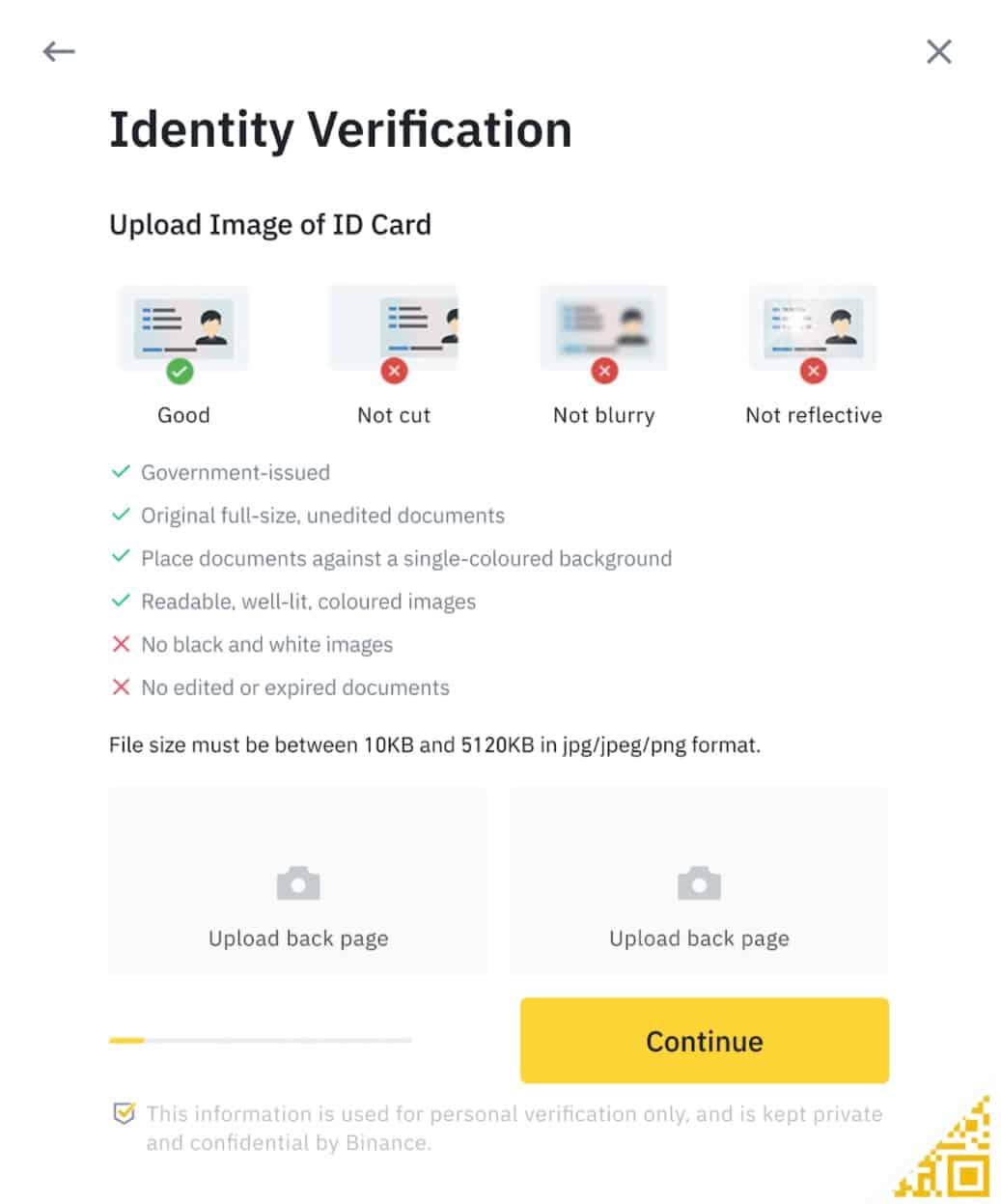
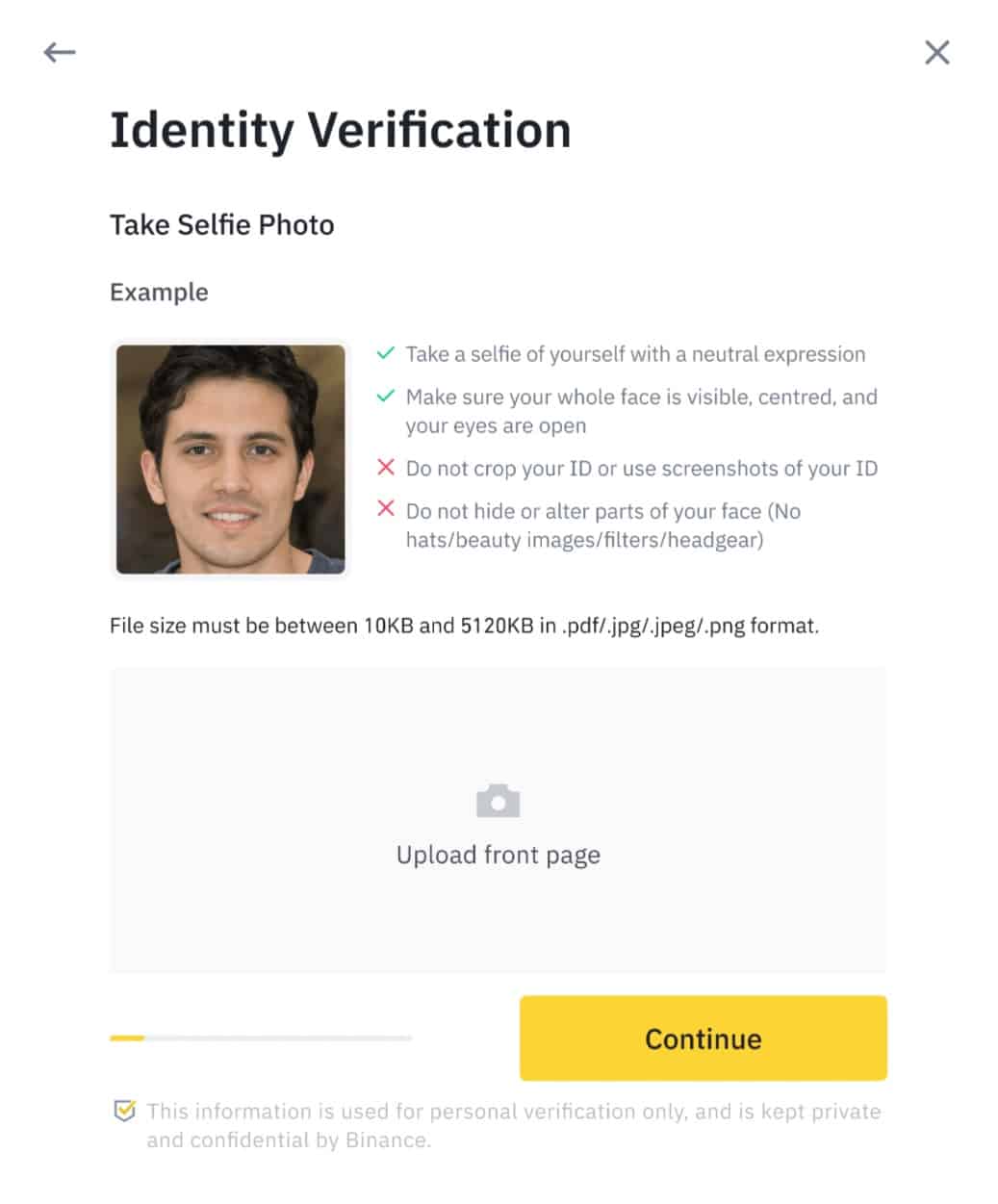
Do not wear hats, glasses, or use filters, and make sure that the lighting is sufficient.
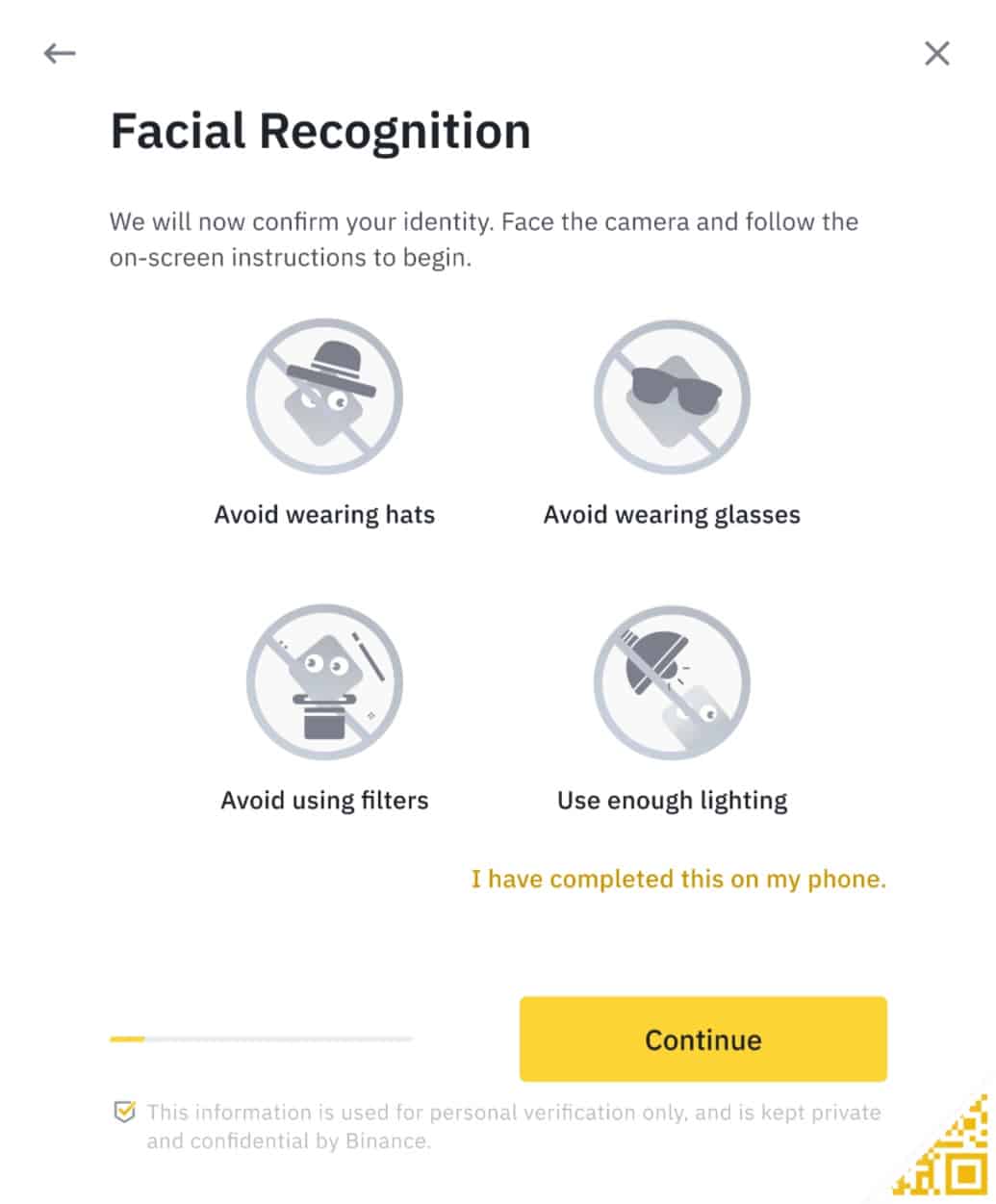
Once your application has been verified, you will receive an email notification.
How to buy cryptocurrency on Binance
Step 1: Log in to your Binance account and click “Buy Crypto” and then “Credit/Debit Card”.
Step 2: Here you can choose to buy crypto with different fiat currencies. Enter the fiat amount you want to spend and the system will automatically display the amount of crypto you can get. When you have selected the amount you wish to spend then press “Continue”.
Note: You might not be able to purchase every cryptocurrency directly using fiat, if you’re looking to purchase something that isn’t offered in the currency list on this page, then you will want to purchase USDT. We will then show you how to exchange that on the spot-market for the cryptocurrency that you want in the next section of this guide.
Step 3: Click “Add New Card”. Then enter your credit card details and your billing address.
Step 4: Check the payment details and confirm your order within 1 minute. After 1 minute, the price and the amount of crypto you will get will be recalculated. You can click “Refresh” to see the latest market price. You will then be redirected to your bank’s OTP Transaction Page. Follow the on-screen instructions to verify the payment.
How to Conduct Spot Trading on Binance
Step 1: Log in to your Binance account.
Click on “Classic” under “Trade” on the top navigation bar.
Step 2: Search and enter the cryptocurrency you want to trade.
Step 3: Set buying/selling prices and buying/selling amount (or exchange total). Then click on “Buy”/”Sell”.
(Note: The percentages under the “Amount” box refer to percentages of the total account balance.)
Step 4: If you don’t want to set a manual price, you can place a “Market Order” to set the buying/selling price automatically.
Hide Detailed Instructions
How to create a Gate.io account
Show Detailed Instructions
Hide Detailed Instructions
Step 1: Go to the Gate.io website.
Step 2: Choose your username, your email address and your password. Then check “I certify that I am 18 years of age or older, and I agree to the Gate.io User Agreement Privacy Policy” and click “NEXT”.
Step 3: Set your fund password and click “Create account”.
Note: Your fund password must contain at least 6 characters and can not be the same as your login password.
Step 4: An activation email will be sent to your email address. Complete the rest of the registration process by following the instructions in the email to activate your account. Once this is done done, click “Email activated, please log in”.
How to complete KYC (ID Verification) on Gate.io
In order to ensure the safety of your assets, and to reduce fraud, money laundering, blackmail, and other illegal activities, Gate.io makes it mandatory that all users obtain KYC ID Verification. Only after your account has obtained KYC ID verification, can you withdraw funds or use credit cards or debit cards to buy cryptocurrencies.
Step 1: Log in to your Gate.io account.
Place your cursor on the top-right profile icon and go to “KYC (ID Verification)”
Step 2: Click “Individual (Verify now)”
Step 3: Select your country, input your full legal name (twice), fill in your ID information, upload photos of both sides of your ID card, and a photo of you holding your ID together with your User ID (UID) for Gate.io. You will see your User ID by placing the cursor on the top-right profile icon on the main page. Make sure everything is filled in correctly and then click on “Confirm and Submit”.
Step 4: After you have submitted all the requested information, you will see the pending approval.
Approval can take anywhere from a few hours to a few days to complete.
Once the KYC is approved, you’re ready to make your first cryptocurrency purchase.
How to buy cryptocurrency on Gate.io
Step 1: Log in to your Gate.io account.
Then in the Menu Bar at the top of the page, click “Buy Crypto” and select “Credit Card”.
Step 2: Enter the amount you wish to spend in the “Buy with Fiat Currency” tab and select the cryptocurrency that you want to buy under the “Currency Purchased” field. Then select one of the “Service Providers” below and click the “Place Order” button to enter the confirmation page.
Note: You might not be able to purchase every cryptocurrency directly using fiat, if you’re looking to purchase something that isn’t offered in the currency list on this page, then you will want to purchase USDT. We will then show you how to exchange that on the spot-market for the cryptocurrency that you want in the next section of this guide.
Step 3: On the confirmation page, select “Buy Crypto” or the “Create Order” button to complete the payment.
Note: To ensure a quick and secure way of receiving the order, users might need to conduct an additional Identity Verification (KYC) with a third-party service provider. Once successfully verified, the service provider will immediately transfer the cryptocurrencies to your Gate.io account.
How to Conduct Spot Trading on Gate.io
Step 1: Log in to your Gate.io account.
Click on “Spot Trading” under “Trade” on the top navigation bar.
You can either choose “standard” or “professional” version. This tutorial uses the standard version.
Step 2: Search and enter the cryptocurrency you want to trade.
Step 3: Set buying/selling prices and buying/selling amount (or exchange total). Then click on “Buy”/”Sell”.
(Note: The percentages under the “Amount” box refer to percentages of the total account balance.)
Step 4: If you don’t want to set a manual price, you can click on the last prices on the order book to set the buying/selling price automatically.
Step 5: Confirm the price and amount. Then click on “Place Order” to place the order, followed by “Confirm Order” to confirm it.
Hide Detailed Instructions
For more in-depth instructions, our ‘Absolute Beginner’s Guide To Cryptocurrency Investing‘ will take you through the process step-by step. In addition to providing instructions for sending and receiving your cryptocurrency.
And if you’re completely new to crypto our beginner, intermediate and advanced level articles will get you up to speed with everything you need to know about the cryptocurrency space starting out.
Simplecryptoguide.com
What Is IOTA (MIOTA)?
What Is the IOTA Foundation?
The IOTA Foundation is a global network of developers, designers, engineers and entrepreneurs working to make IOTA a comprehensive and secure distributed ledger technology. The Foundation aims to transform IOTA into an enabling technology that will be adopted and customized by enterprises and individuals across industries and use cases.
The founding principles of the IOTA Foundation revolve around open-source and community-centered ethics. The Foundation believes the machine economy should be built on a feeless protocol, be scalable and ecologically friendly, and allow for a low-energy exchange of value and information. The IOTA Foundation’s Board of Directors includes Dominik Schiener, Dr. Serguei Popov and Dr. Navin Ramachandran.
The IOTA Foundation was founded in 2015 to address some universally perceived shortcomings of blockchain technology. IOTA’s founders saw an opportunity for a technology that could scale to the level of enterprise and civic projects while simultaneously reducing or eliminating the fees associated with blockchain transactions.
Scalability and fee-less transactions remain the guiding principles behind most of the developments at IOTA. These principles have positioned IOTA to become a standardized network protocol for applications like the Internet of Things, in which “transactions” can involve something as small as one tiny sensor in a vehicle. In order for the IoT to scale to the level of a city or a traffic system, these millions of transactions would need to be unencumbered by the fees inherent to nearly all public blockchains currently in existence.
In terms of scalability and flexibility, IOTA’s founders also sought to improve upon existing blockchain transaction speeds. Blockchain transactions are typically limited by the speed at which miners can discover new blocks, called block timing. This precludes any applications that require near-real time settlement, such as traffic management that is secured directly on the base layer of a DLT. IOTA uses a much lighter transaction consensus model, which dramatically improves transaction speed and its finality, allowing actors to secure any transaction or data on-chain instead of having to outsource them to a second layer solution
What Does IOTA Mean?
The word iota refers to the Greek letter Iota and its contemporary definition, meaning a minuscule amount of something. The name was chosen by the IOTA Foundation because the Internet of Things will consist of billions of tiny transactions and exchanges per day. Although tiny transactions are not the only thing that the Tangle can facilitate, the ability to scale from tiny machine sensors to the largest networks of civic architecture is a distinguishing feature of the IOTA ledger.
What Is MIOTA?
What Is the Tangle?
What Is Distributed Ledger Technology?
Distributed ledger technology (DLT) is the general term for what is commonly referred to as blockchain. Blockchain is one type of DLT and IOTA’s directed acyclic graph (DAG) is another specific type of DLT.
A DLT is a database: picture a large number of Excel sheets distributed between nodes in a peer-to-peer network. Whereas most databases are centrally located, DLTs are (as the name suggests) distributed databases that share information amongst multiple nodes in a network. These nodes can be personal computers, servers, or the gigantic warehouses of computers commonly used for blockchain mining farms.
The validity check for any transaction — and the test for whether it will be recorded in the ledger – is preprogrammed in the DLT’s code. Transactions validated on a blockchain or on a DAG are automatically vetted by multiple network nodes, making them trustworthy and secure. The vast majority of nodes agree on the validity of a ledger state, providing a trustworthy record of transactions of the past and thereby enabling trustworthy transactions in the future.
This means that DLTs are more public and transparent than private databases. There is still privacy due to data encryption, yet, crucially, all involved parties are able to view all the transactions that have ever occurred on a given DLT, by design. The ledger in a DLT is immutable, meaning that the ledger state cannot be changed. This is because all of the nodes have agreed to one common record, which will be adhered to as long as the majority continues to accept it.
DLTs can be either permissioned or permissionless. In the first case, the networks are public environments in which anyone can participate; in the latter, they are non-public, invitation-only networks. As IOTA is an open-source framework, networks can be deployed in either configuration. However, the gold standard for DLT developers (and the area that still presents the highest number of unsolved challenges) is a permissionless DLT for an open, machine-to-machine economy, which could automatically target the largest possible addressable market.
What can you use IOTA (MIOTA) for?
The IOTA Foundation is building and enabling the technologies necessary for this future to become a reality. This demands a dizzying toolset and frameworks that would allow enterprise partners and individuals to make full use of the benefits of the Tangle.
To get involved immediately with IOTA, you might consider setting up a node on your own computer or server. This will allow you to interact directly with the Tangle in its current state. You can find a wealth of information and community-driven projects on IOTA blogs and official github repositories, as well as in many community github repositories.
Why Doesn’t IOTA Have Miners or Blocks?
Rather than mining operations that rely on power-hungry computational processing, IOTA’s transactions are confirmed every time a new transaction is conducted on the network. Until IOTA 2.0 will be deployed on the mainnet, all new transactions must confirm at least two previous transactions that have recently taken place on the network. A cryptographically-enabled computation prevents double spending, and the confirmations are transmitted to all the other nodes on the network. In this way, all the nodes participate and share the exact same view of what has been approved on the network.
What Is the Coordinator?
The Coordinator is a specialized client that is owned and controlled by the IOTA Foundation. By issuing specialized transactions called milestones, the Coordinator client allows all the nodes in an IOTA network to verify the integrity of the ledger. The Coordinator achieves this security processing through a complex mechanism of transaction indexes, accepted collectively by all nodes in the network.
What Is Coordicide?
Once Coordicide is implemented, IOTA will be a protocol that has achieved not only significant scalability and security but also decentralization. The problem of solving all of these three aspects is often referred to as the “crypto trilemma.”
IOTA, on the other hand, offers top-level security thanks to its cryptographic consensus mechanism. It also offers tremendous scalability, and the consensus mechanism itself is feeless and low-energy. However, the security provided by the Coordinator, in its issuing of milestones that other nodes reference periodically, means that IOTA is not yet truly decentralized. There is a single point of failure that can potentially shut down the entire network.
With the removal of this secondary and centralized security measure via Coordicide, the IOTA protocol will reach its full maturity as a technology and become fully decentralized. Barring any major developments in the crypto world, this network evolution would make IOTA the first DLT that offers scalability, security and decentralization, without incurring any fees.
What Is the Transactions per Second Rate of IOTA?
Prior to Coordicide, the Transactions per Second (TPS) rate remains limited by the processing power of the nodes in the Tangle. Tests performed on the Tangle show that this number is above 1000 transactions per second, and likely much more if nodes themselves are run on powerful hardware. When Coordicide and the concept of sharding are implemented, the upper bound of the network’s potential throughput will be dictated by the amount of logical shards in the network. Each shard will have its own isolated throughput properties. The scalability properties of IOTA will then facilitate the scenarios for the network architecture of the Internet of Things.
What Is Trinity?
What Is Firefly?
What Is Mana?
The Mana solution is quite complex. In short, Mana acts as a “shadow currency,” a scarce resource within the IOTA network. It can be acquired by holding IOTA tokens, processing transactions as a node, or renting it from other users. Its scarcity makes it difficult to acquire, so the security of the IOTA network is effectively based on the reputation of nodes within the network holding Mana that is generated by value transactions that are issued through them.
What Is Stronghold?
What Is IOTA Access?
Such a network could take many forms, from building door access systems for employees that take into account specific doors, times of day and building areas, to the controlled access of the WiFi network at a coffee shop. The framework is designed to be lightweight and secure with very low energy requirements, so that the configuration of smart devices remains as flexible as possible.
What Is IOTA Identity?
In the future, rather than a byzantine and chaotic collection of usernames and passwords, IOTA Identity will be a single source of trust for online interactions.
IOTA development updates in 2023
IOTA (MIOTA) has made several significant strides in its development throughout 2023. Here’s a summary of the key developments:
- IOTA Software Development Kit (SDK): The first stable version (1.0) of the SDK was released at the end of July. The team is now working on updating the SDK to version 2.0, which involves implementing new Transaction Protocol Improvements Proposals (TIPs) and rethinking wallet usability. A 1.1 version with performance and usability improvements has also been released.
- Identity Improvements: The JWT implementation has been aligned with established standards for encoding Credentials and Presentations, leading to the release of the 1.0 Release Candidate. An Identity Working Group has been formed to decentralize the library’s maintenance and development efforts.
- Firefly Wallet Updates: Both Firefly IOTA and Firefly Shimmer have received updates, including bug fixes and a Stronghold security upgrade. The IOTA team is also working to ensure Firefly IOTA’s compatibility with the upcoming Stardust upgrade and the IOTA airdrop. In contrast, Firefly Shimmer is preparing for the ShimmerEVM launch, enabling transactions from Layer 1 to Layer 2.
- Shimmer Network’s Success: The Shimmer Network has operated successfully without any issues since its launch six months ago. Shimmer’s SMR token was listed on Europe’s top exchange, Bitpanda, and the ShimmerEVM Testnet chain was launched, marking important milestones for the project’s growth.
- Stardust Protocol Upgrade: This is the largest utility upgrade in IOTA’s history and has been deployed first on the Shimmer network. The upgrade brings Layer 1 native tokens and NFTs, smart contract chain anchoring, storage deposits, improved microtransactions, and more. This upgrade is set to be ported to IOTA later.
- Developer Experience Improvements: The Developer Experience team has reorganized the examples within the SDK repository and improved documentation in preparation for the ShimmerEVM Mainnet launch. They have also followed the Diataxis framework for a more systematic organization of communication materials, particularly for the upcoming IOTA 2.0 release.
- Community and Ecosystem Developments: Preparations are underway for the IOTA Community Treasury Tokens to become available once the IOTA EVM chain goes live. The team has been working on designing a framework for the new IOTA Ecosystem Fund with input from the IOTA Community.
- Regulatory Affairs and Social Impact: The IOTA Foundation’s Regulatory Affairs team has been actively involved in global regulatory developments and working closely with regulators. The BC100+ initiative has achieved notable milestones, including the addition of 18 signatory members and the publication of a report summarizing activities from March to August 2023.
These developments highlight IOTA’s ongoing commitment to improving its protocol, expanding its ecosystem, and enhancing user and developer experiences.
Official website: https://www.iota.org/
Best cryptocurrency wallet for iota (miota)
There are plenty of different crypto wallets available. The best one for you depends on your general trading habits and which provides the most security in your situation. There are two main types of wallets: hot storage wallets (digital) and cold storage or hardware wallets (physical). Both have their pros and cons, and there is not necessarily a right or wrong answer when it comes to figuring out which crypto wallet is best for you.
HOW DO I DECIDE WHICH cryptocurrency WALLET TO USE for iota (miota)?
Deciding which type of wallet to use depends on a variety of factors, including:
- How often you trade. In general, hot wallets are better for more active cryptocurrency traders. Quick login ability means you are only a few clicks and taps away from buying and selling crypto. Cold wallets are better suited for those looking to make less frequent trades.
- What you want to trade. As mentioned earlier, not all wallets support all types of cryptocurrencies. However, some of the best crypto wallets have the power to trade hundreds of different currencies, providing more of a one-size-fits-all experience.
- Your peace of mind. For those worried about hacking, having a physical cold wallet stored in a safe deposit box at the bank or somewhere at home, provides the safest, most secure option. Others might be confident in their ability to keep their hot wallets secure.
- How much it costs. It is important to investigate the costs associated with each wallet. Many hot wallets will be free to set up. Meanwhile, cold wallets, like any piece of hardware, will cost money to purchase.
- What it can do. While the basics of each cryptocurrency wallet are the same, additional features can help set them apart. This is especially true of hot wallets, many of which come with advanced reporting features, insights into the crypto market, the ability to convert cryptocurrencies and more. Security features can also be a good differentiator.
For a more in-depth overview of cryptocurrency wallets visit our “Cryptocurrency Wallets Explained” guide.
If you’re going to be dealing in larger volumes of crypto, investing in cold storage might prove advantageous.
Most widespead examples of this being the Ledger Nano and the Trezor.
Ledger manufactures cold storage wallets designed for users who want increased security. Their wallets are a physical device that connects to your computer. Only when the device is connected can you send your cryptocurrency from it. Ledger offers a variety of products, such as the Ledger Nano S and the Ledger Nano X (a bluetooth connected hardware wallet).
Trezor is a pioneering hardware wallet company. The combination of world-class security with an intuitive interface and compatibility with other desktop wallets, makes it ideal for beginners and experts alike. The company has gained a lot of the Bitcoin community’s respect over the years. Trezor offers two main models – The Trezor One and Trezor Model T (which has a built in touch screen).
Market Overview
Coinmarketcap.com
Coinmarketcap will be your cryptocurrency go-to for just about everything. Here you can see the following:




